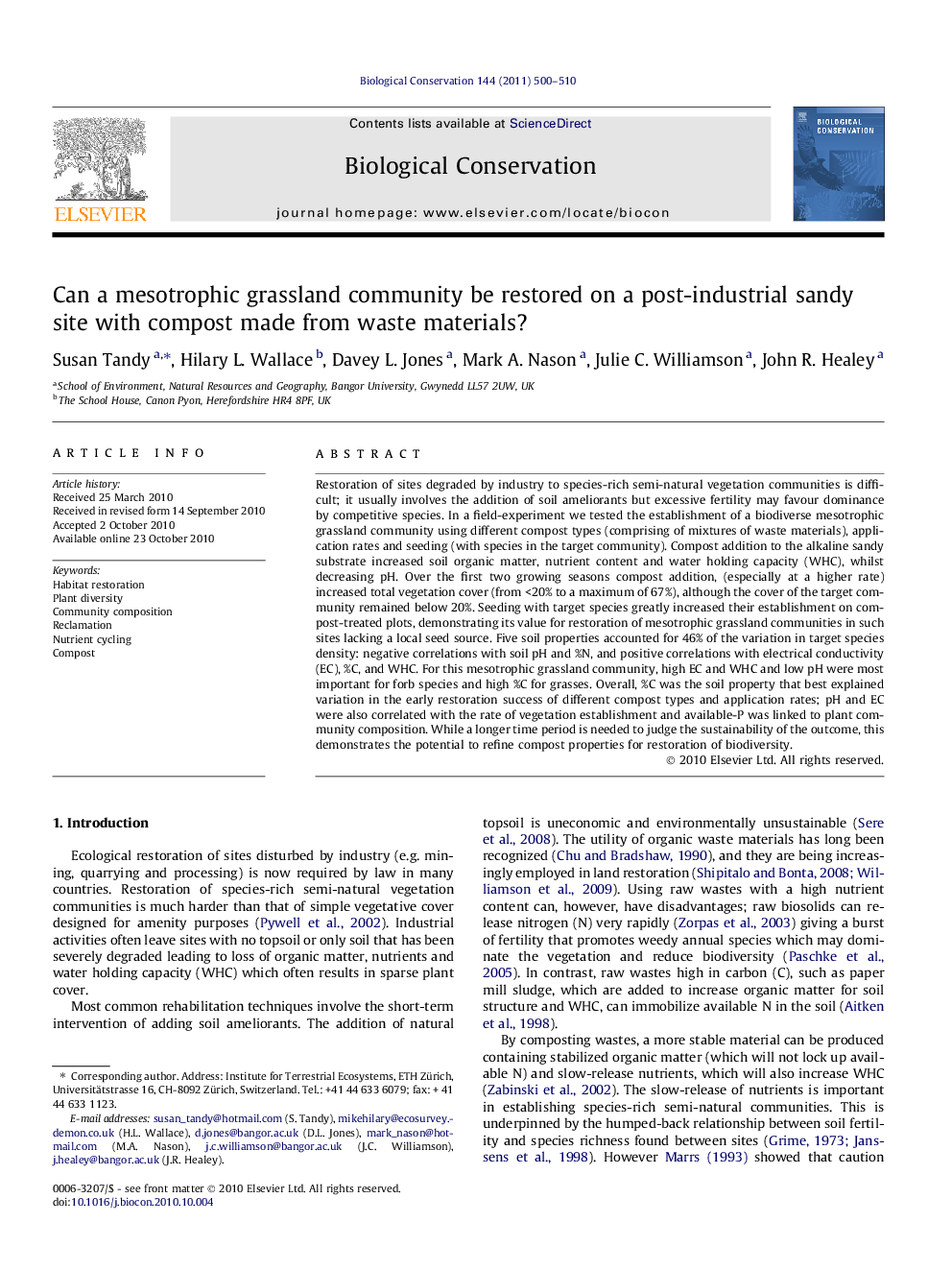| Article ID | Journal | Published Year | Pages | File Type |
|---|---|---|---|---|
| 4385711 | Biological Conservation | 2011 | 11 Pages |
Abstract
Restoration of sites degraded by industry to species-rich semi-natural vegetation communities is difficult; it usually involves the addition of soil ameliorants but excessive fertility may favour dominance by competitive species. In a field-experiment we tested the establishment of a biodiverse mesotrophic grassland community using different compost types (comprising of mixtures of waste materials), application rates and seeding (with species in the target community). Compost addition to the alkaline sandy substrate increased soil organic matter, nutrient content and water holding capacity (WHC), whilst decreasing pH. Over the first two growing seasons compost addition, (especially at a higher rate) increased total vegetation cover (from <20% to a maximum of 67%), although the cover of the target community remained below 20%. Seeding with target species greatly increased their establishment on compost-treated plots, demonstrating its value for restoration of mesotrophic grassland communities in such sites lacking a local seed source. Five soil properties accounted for 46% of the variation in target species density: negative correlations with soil pH and %N, and positive correlations with electrical conductivity (EC), %C, and WHC. For this mesotrophic grassland community, high EC and WHC and low pH were most important for forb species and high %C for grasses. Overall, %C was the soil property that best explained variation in the early restoration success of different compost types and application rates; pH and EC were also correlated with the rate of vegetation establishment and available-P was linked to plant community composition. While a longer time period is needed to judge the sustainability of the outcome, this demonstrates the potential to refine compost properties for restoration of biodiversity.
Related Topics
Life Sciences
Agricultural and Biological Sciences
Ecology, Evolution, Behavior and Systematics
Authors
Susan Tandy, Hilary L. Wallace, Davey L. Jones, Mark A. Nason, Julie C. Williamson, John R. Healey,
